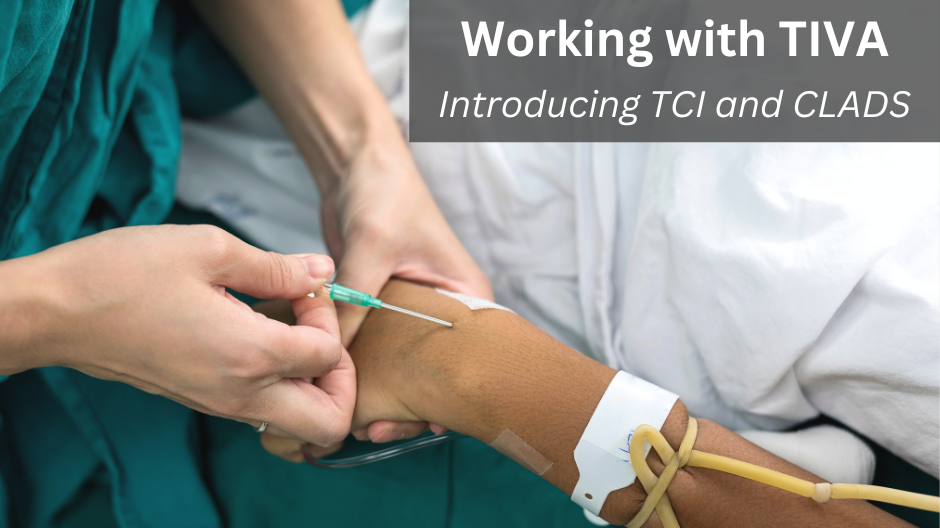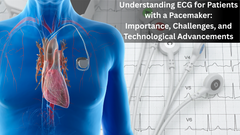Working with Total Intravenous Anaesthesia (TIVA): Introducing TCI and CLADS
Total Intravenous Anaesthesia (TIVA) is a technique that involves the administration of anaesthetic agents solely through intravenous infusion, eliminating the use of inhalational agents. TIVA offers several advantages, including precise control of anaesthetic depth, faster recovery, and reduced environmental impact. In this article, we will explore the benefits of TIVA, discuss the calculation of the appropriate dosage, provide an introduction to Target-Controlled Infusion (TCI) and Closed-Loop Anaesthesia Delivery Systems (CLADS), and briefly discuss their working with TIVA.
The Advantages of TIVA
- > Precise Anaesthetic Control: TIVA allows precise anaesthetic depth control through continuous intravenous infusion. This accurate control leads to faster emergence from anaesthesia and more rapid recovery, resulting in improved patient outcomes.
- > Reduced Side Effects: TIVA eliminates the use of inhalational anaesthetic agents, which can cause side effects such as postoperative nausea and vomiting (PONV) and respiratory irritation. By avoiding these agents, TIVA minimizes the occurrence of such side effects, leading to enhanced patient comfort.
- > Cardiovascular Stability: TIVA is associated with better cardiovascular stability than inhalational anaesthesia. By avoiding inhalational agents, which can depress cardiac function, TIVA helps maintain stable haemodynamic, particularly in patients with cardiovascular disease.
Calculating the Right Dose for TIVA
Determining the appropriate dosage for TIVA requires careful consideration of several factors, including patient characteristics, surgical procedure, and individual response to anaesthetic agents. Here are some key considerations:
- > Body Weight: Body weight is an essential factor in TIVA dosage calculation. Most dosing guidelines are weight-based to ensure accurate administration of anaesthetic agents.
- > Age and Medical Condition: Advanced age and medical comorbidities may require dosage adjustments. Elderly patients or those with impaired organ function may require reduced doses to avoid drug accumulation.
- > Drug Pharmacokinetics: Understanding the pharmacokinetics of the chosen intravenous anaesthetic agents is crucial for dosage calculation. Pharmacokinetic models for TIVA guide drug infusion rates based on individual patient factors.
Introducing Target-Controlled Infusion (TCI) and Closed-Loop Anaesthesia Delivery Systems (CLADS)
TCI is a technique used in TIVA that employs computer-assisted systems to control and deliver intravenous anaesthetic agents. These systems use pharmacokinetic models and patient-specific factors to calculate and adjust drug infusion rates, ensuring the desired depth of anaesthesia.
Conversely, CLADS represents a broader concept that incorporates TCI, real-time patient monitoring, and closed-loop systems to optimize anaesthetic delivery. CLADS continuously monitor vital signs and adjusts anaesthetic dosing based on patient feedback, creating a closed-loop system that ensures precise control and enhanced patient safety.
Working with TIVA
Working with TIVA requires proper training and familiarization with the technique and the specific TCI system. Here are some important considerations:
- > Training and Experience: Healthcare professionals should receive adequate training on TIVA principles, drug pharmacokinetics, and TCI system operation. Familiarity with the chosen TCI system and regular practice in TIVA administration is crucial for optimal patient care.
- > Monitoring and Assessment: During TIVA, continuous patient monitoring is essential to ensure anaesthetic depth and vital sign stability. Monitoring includes parameters such as heart rate, blood pressure, oxygen saturation, and end-tidal carbon dioxide. Regular assessment of the patient's level of consciousness and response to stimuli is also necessary.
- > Collaborative Approach: Working with TIVA requires collaboration among anaesthesiologists, surgeons, and nursing staff. Effective communication and coordination among team members are essential to ensure patient safety and smooth execution of the anaesthetic plan.
Final Thoughts
Total Intravenous Anaesthesia (TIVA) offers significant advantages in precise anaesthetic control, reduced side effects, and improved cardiovascular stability. Calculating the right dosage for TIVA involves considering patient characteristics, surgical requirements, and pharmacokinetic models. TIVA can be facilitated through Target-Controlled Infusion (TCI) systems, which provide computer-assisted drug infusion based on individual patient factors. The broader concept of Closed-Loop Anaesthesia Delivery Systems (CLADS) combines TCI, real-time patient monitoring, and closed-loop systems to optimize anaesthetic administration and enhance patient safety. Working with TIVA requires appropriate training, monitoring, and a collaborative approach among healthcare professionals. By harnessing the benefits of TIVA and leveraging TCI and CLADS technologies, anaesthesiologists can provide precise and individualized anaesthesia while ensuring the best possible outcomes for their patients.












